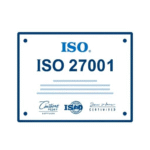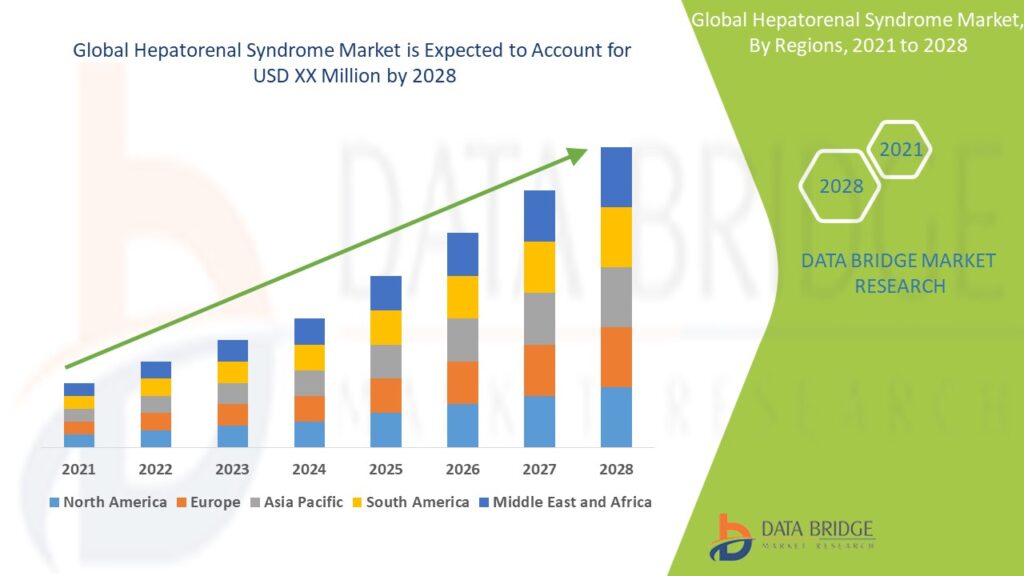Hepatorenal Syndrome (HRS) is a life-threatening complication of advanced liver disease, particularly cirrhosis. It involves the rapid deterioration of kidney function due to liver failure, despite the absence of identifiable kidney pathology. HRS significantly increases morbidity and mortality, making it a critical area in hepatology and nephrology.
The Hepatorenal Syndrome Market is experiencing growth as a result of the rising incidence of liver disorders, expanding access to healthcare services, improved diagnostics, and a growing demand for targeted therapies. New drug approvals, innovations in transplantation, and clinical trials are transforming the treatment landscape, offering renewed hope for patients.
Get More Details: https://www.databridgemarketresearch.com/reports/global-hepatorenal-syndrome-market
Understanding Hepatorenal Syndrome
What Is Hepatorenal Syndrome?
HRS is a functional renal failure that occurs in patients with severe liver dysfunction, without any structural damage to the kidneys. It’s typically categorized into two types:
-
Type 1 HRS: Rapid decline in kidney function, often triggered by an acute event like infection or bleeding.
-
Type 2 HRS: Gradual renal failure, usually associated with refractory ascites and chronic liver disease.
Causes and Risk Factors
-
Advanced cirrhosis or fulminant hepatic failure
-
Portal hypertension
-
Spontaneous bacterial peritonitis (SBP)
-
Use of diuretics or NSAIDs in cirrhotic patients
-
Alcoholic liver disease and chronic hepatitis
Market Overview
The global hepatorenal syndrome market was valued at USD 1.5 billion in 2023 and is expected to reach USD 2.5 billion by 2030, growing at a CAGR of 7.1%. This growth is driven by rising liver disease cases, greater healthcare access, and pharmaceutical innovation.
Key Market Drivers
📊 Rising Burden of Liver Diseases
Increasing cases of non-alcoholic fatty liver disease (NAFLD), hepatitis B and C, and alcoholic liver cirrhosis are leading causes of HRS.
💊 Breakthrough Therapies & Drug Approvals
New drugs such as terlipressin and vasopressin analogs, along with advancements in albumin-based therapies, are redefining treatment standards.
🏥 Growth in Liver Transplantation Programs
As more regions adopt and expand liver transplant capabilities, HRS management improves through better long-term outcomes.
🔬 Improvements in Diagnostic Tools
Early-stage detection using renal biomarkers, imaging, and serum creatinine monitoring helps initiate timely treatment.
Treatment Landscape
1. Pharmacological Treatments
-
Terlipressin (FDA approved): Improves renal perfusion by vasoconstricting splanchnic arteries.
-
Midodrine + Octreotide: An effective combo therapy for patients without access to terlipressin.
-
Albumin Infusion: Maintains blood volume and improves hemodynamics.
-
Norepinephrine: Used in intensive care settings as a vasopressor alternative.
2. Liver Transplantation
The only curative option for eligible HRS patients. Post-transplant survival rates are improving with enhanced perioperative care.
3. Dialysis (Renal Replacement Therapy)
Used as a bridge to transplantation or in acute cases where pharmacological therapy fails.
Challenges in the Market
⚠ High Mortality and Rapid Disease Progression – Requires swift diagnosis and intervention.
⚠ Limited Access to Transplantation – Scarcity of donors and long waiting lists hinder curative treatment.
⚠ Costly Therapeutics – Advanced drugs and supportive care can be financially burdensome.
⚠ Underdiagnosis in Low-Income Regions – Lack of awareness and diagnostic infrastructure in emerging markets.
Key Players and Innovations
💼 Pharmaceutical Companies
-
Mallinckrodt Pharmaceuticals – Developer of terlipressin (FDA-approved for HRS in 2022).
-
Novartis, Takeda, Pfizer, and Grifols – Engaged in clinical trials for liver and renal therapies.
🧪 Research Institutions
Global academic and medical research centers are exploring:
-
Biomarkers for early diagnosis
-
Gene-based therapies
-
Minimally invasive liver-kidney support systems
Future Trends and Opportunities
🔬 AI-Powered Predictive Diagnostics
Machine learning models for risk prediction and early HRS detection.
💉 Gene & Cell Therapy Research
Exploring the role of stem cells and gene editing in liver and kidney regeneration.
🌍 Market Expansion in Emerging Economies
Increased funding in Africa, Latin America, and Southeast Asia for hepatology and nephrology.
🌱 Development of Low-Cost Drug Alternatives
Biosimilars and generics to make vasopressor therapies more accessible in resource-limited settings.
Conclusion
The Hepatorenal Syndrome Market is evolving amid growing recognition of liver-kidney interaction complexities. While current therapies offer a lifeline for managing symptoms, the future lies in early diagnosis, multi-modal therapies, and expanded access to transplantation. Collaboration among pharmaceutical innovators, researchers, and policymakers will be key to combating this deadly condition effectively.
As we advance into a future of precision medicine and regenerative therapies, the outlook for patients with HRS grows increasingly hopeful.
FAQs
1. What is the primary treatment for Hepatorenal Syndrome?
Terlipressin combined with albumin is the first-line treatment, with liver transplantation being the only curative solution.
2. Can Hepatorenal Syndrome be reversed?
In early stages, reversible with drug therapy and fluid management; however, late-stage HRS often requires transplantation.
3. Who is most at risk for developing HRS?
Patients with cirrhosis, chronic liver disease, and those with severe ascites or bacterial peritonitis are at high risk.
4. Are there any new drugs in the pipeline for HRS?
Yes, novel vasopressin analogs, anti-inflammatory agents, and gene therapy candidates are under clinical development.
5. What regions show the most growth in the HRS treatment market?
North America and Europe lead in adoption, while Asia-Pacific and Latin America show high growth potential due to increasing liver disease burden.
- Global Hepatorenal Syndrome Market Size, Share, and Trends Analysis Report – Industry Overview and Forecast to 2032
- Global Hepatorenal Syndrome Market Segmentation, By Type (Type 1 Hepatorenal Syndrome, Type 2 Hepatorenal Syndrome, and Others), Diagnosis (Complete Blood Cell Count, Liver Function Tests, Urinalysis and Urine Electrolytes,, and Others), Medication (Vasopressin Analogues, Sympathomimetic Agents, Plasma Volume Expanders, and Others), Surgical Therapies (Peritoneovenous Shunting, Surgical Shunts, Liver Transplantation, and Others), Route of Administration (Oral, Injectable, and Others), End Users (Hospitals, Homecare, Specialty Clinics, and Others), Distribution Channel (Hospital Pharmacy, Online Pharmacy, Retail Pharmacy, and Others) – Industry Trends and Forecast to 2032
- Hepatorenal Syndrome Market
Related posts:
 Nutrition and Wellness Programs in Assisted Living Communities in Oakville
Nutrition and Wellness Programs in Assisted Living Communities in Oakville
 How UAE Fitout Experts Are Elevating Luxury Brand Spaces in 2025
How UAE Fitout Experts Are Elevating Luxury Brand Spaces in 2025
 Sp5der Hoodie: Comfort, Fit, and Real-World Functionality Redefined
Sp5der Hoodie: Comfort, Fit, and Real-World Functionality Redefined
 Discover the Best Full Body Massage Experience in Lancaster, PA with Focused Care Therapeutic Massage
Discover the Best Full Body Massage Experience in Lancaster, PA with Focused Care Therapeutic Massage
 ISO 27001 Training: A Real-World Lifeline to Reduce the Risk of Data Breaches
ISO 27001 Training: A Real-World Lifeline to Reduce the Risk of Data Breaches
 How Instagram Stories Help Businesses: A 2025 gerat Guide ..
How Instagram Stories Help Businesses: A 2025 gerat Guide ..
 Thermal Imaging: Revolutionizing Detection Through Infrared Technology
Thermal Imaging: Revolutionizing Detection Through Infrared Technology
 What Is Procurement Consulting and Why Does Your Business Need It?
What Is Procurement Consulting and Why Does Your Business Need It?








